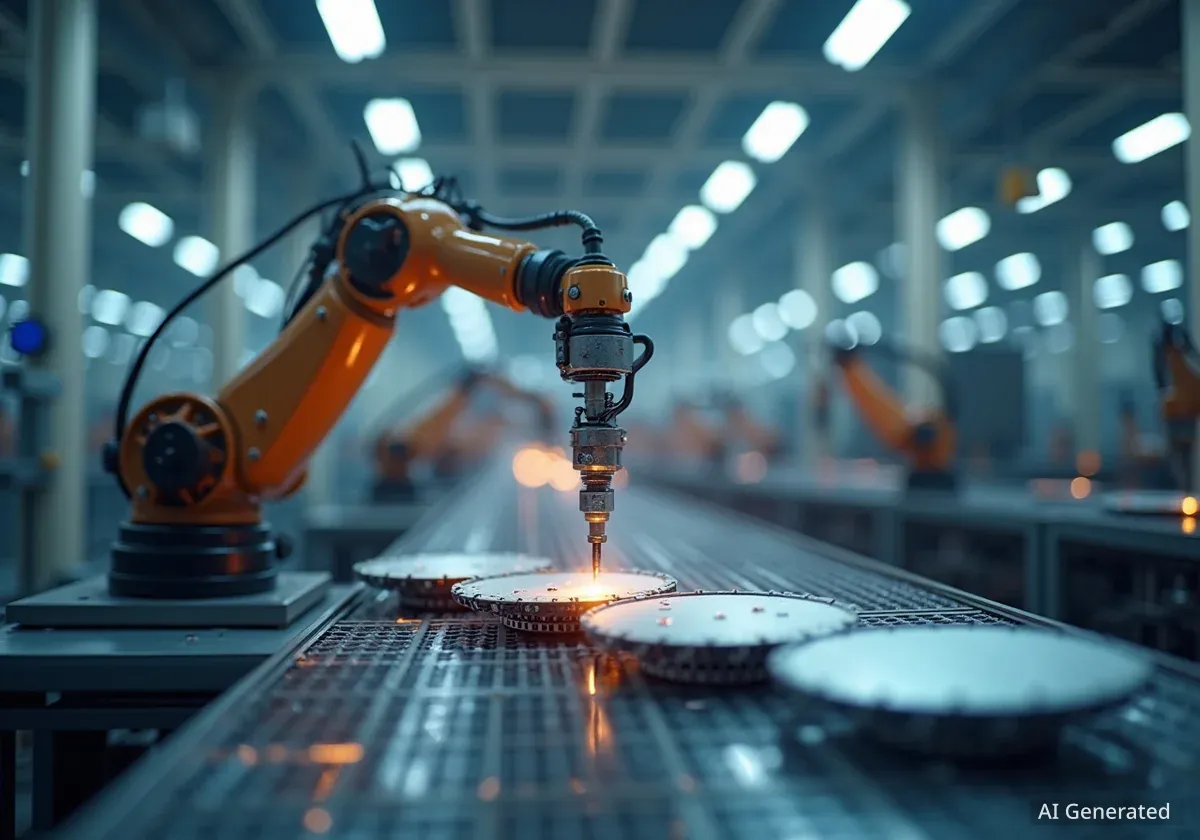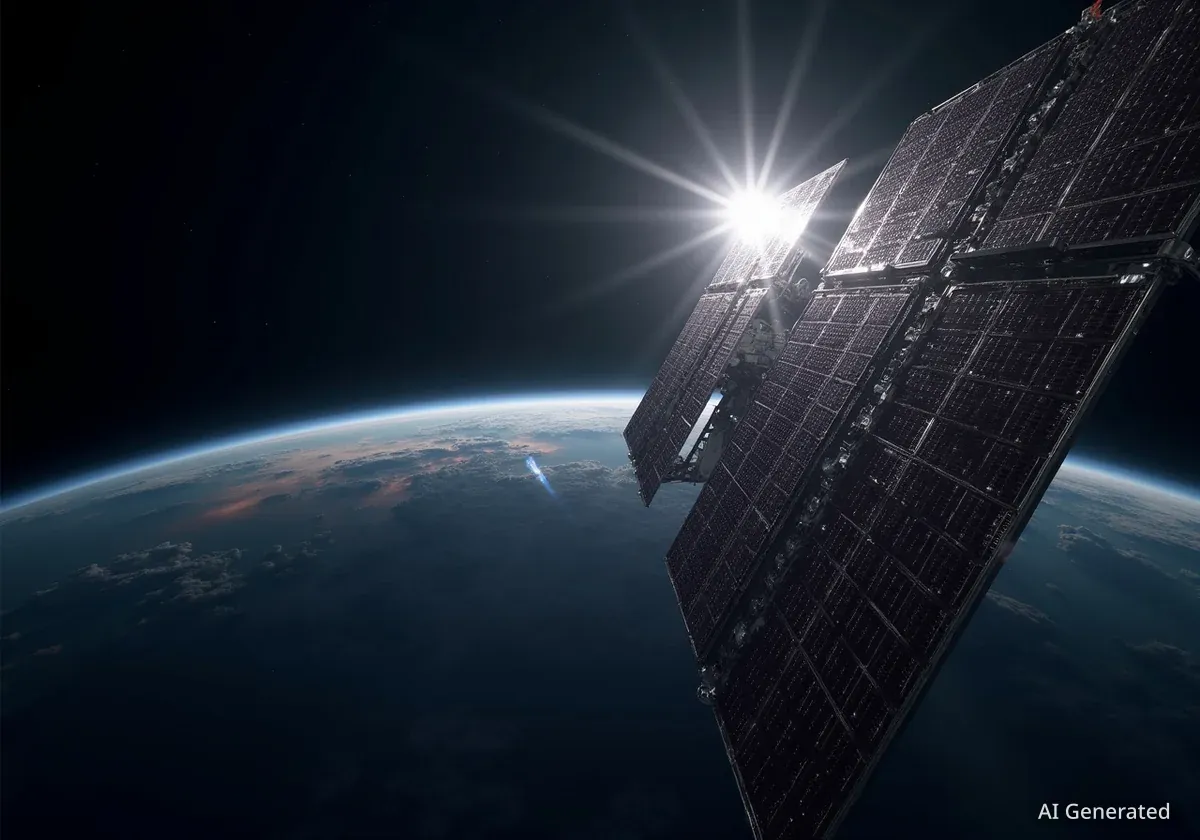Thales Alenia Space has officially opened its new Space Smart Factory in Rome, a state-of-the-art facility designed to significantly increase satellite production. The project, supported by a more than €100 million investment, utilizes advanced digital and robotic technologies to meet the growing demand for satellite constellations and institutional space programs.
Key Takeaways
- Thales Alenia Space inaugurated its new Space Smart Factory in Rome on October 7, 2025.
- The facility was funded by a combined investment of over €100 million from the Italian Space Agency (ASI), Thales, and Leonardo.
- It is designed to produce over 100 satellites per year, focusing on small satellites and large constellations.
- The factory heavily incorporates Industry 4.0 technologies, including robotics, digital twins, and virtual reality.
- Initial projects include the Sicral 3 defense satellite, second-generation Galileo satellites, and new Copernicus missions.
A Strategic Investment in European Space Infrastructure
Thales Alenia Space, a joint venture between Thales (67%) and Leonardo (33%), has launched a new production hub at the Tecnopolo Tiburtino technology park in Rome. The inauguration ceremony was attended by Italian President Sergio Mattarella, highlighting the project's national and European significance.
The development of the Space Smart Factory was made possible through a substantial financial commitment exceeding €100 million. Funding was provided through Italy’s National Recovery and Resilience Plan (PNRR), managed by the Italian Space Agency (ASI), along with direct investments from parent companies Thales and Leonardo.
Adolfo Urso, Italy's Minister for Enterprises and Made in Italy, described the facility as a strategic step to strengthen the national space supply chain.
"With the inauguration of this new Space Smart Factory, we are taking another strategic step to strengthen the national space supply chain and consolidate Italy’s leadership," Urso stated. "This project also stands as a concrete example of effective collaboration between the public and private sectors."
The factory is scheduled to begin operations by the end of the year, with its first task being work on the Sicral 3 satellite for the Italian Ministry of Defense.
High-Profile Inauguration
The opening event was attended by a host of dignitaries, including President Sergio Mattarella, Minister Adolfo Urso, Leonardo Chairman Stefano Pontecorvo, Leonardo CEO Roberto Cingolani, and ASI President Teodoro Valente. Leadership from Thales and Thales Alenia Space were also present, underscoring the collaborative nature of the project.
Advanced Manufacturing and Digital Technology
The new facility represents a major shift in satellite construction, moving towards a highly automated and digitalized process. It is designed to be one of Europe's most advanced manufacturing centers, integrating Industry 4.0 principles throughout its operations.
Core Technological Features
The factory's design emphasizes flexibility and digital continuity. Key technologies employed include:
- Robotics and Cobots: Automated systems work alongside human technicians to streamline assembly and integration.
- Digital Twins: Virtual models of satellites and production processes allow for simulation and optimization before physical work begins.
- Virtual and Augmented Reality (VR/AR): These tools are used for training, design validation, and providing technicians with real-time information.
- Modular Cleanrooms: The production spaces can be reconfigured to accommodate different types of satellites, from small Earth observation platforms to large telecommunications systems.
Hervé Derrey, CEO of Thales Alenia Space, noted the factory's role in enhancing competitiveness. "Leveraging the latest technologies, the Space Smart Factory will enhance Thales Alenia Space’s production capacity and its global competitiveness as a leading player in Europe’s space industry," he said.
The Space Joint Lab
A central element of the facility is the Space Joint Lab, an innovative collaborative space. It is designed to connect small and medium-sized enterprises (SMEs), startups, and research centers. Key academic partners include Politecnico di Milano and the University of Rome "La Sapienza," with global consulting firm Accenture providing expertise in digital innovation.
Boosting Satellite Production Capacity
The primary goal of the Space Smart Factory is to increase production volume while reducing manufacturing time. The facility is engineered to produce more than 100 satellites per year in the sub-300 kilogram class, which equates to approximately two satellites per week.
This high-throughput capability is essential for building large satellite constellations, which can consist of hundreds of individual spacecraft. According to Massimo Claudio Comparini, Managing Director of Leonardo’s Space Division, the factory is a benchmark for the European space industry.
"The site is capable of producing over 100 satellites a year in the class up to 300 kilograms in an environment integrated with the most advanced digital, robotic and interconnection technologies," Comparini explained.
The factory's reconfigurable design allows it to support a wide range of missions. Its initial production pipeline includes several high-priority European programs.
First Satellites in Production
- Sicral 3: A secure communications satellite for the Italian Ministry of Defense.
- Second-Generation Galileo: Satellites for Europe's global navigation system.
- Copernicus Missions: New Earth observation satellites, including ROSE-L (L-band Synthetic Aperture Radar) and CIMR (Copernicus Imaging Microwave Radiometer).
Giampiero Di Paolo, CEO of Thales Alenia Space Italia, emphasized the factory's role in meeting future demand. "The new Space Smart Factory will serve as an additional production hub able to meet the growing demand for future constellations, while reducing time-to-market and marking a real paradigm shift in space asset manufacturing," he said.
Sustainability and Supply Chain Integration
The design and construction of the Space Smart Factory were guided by sustainable architectural principles. The building is LEED (Leadership in Energy and Environmental Design) certified, incorporating features to minimize its environmental impact.
The facility includes rainwater recovery systems and an extensive array of solar panels that are expected to supply approximately 10% of its energy needs. It also has a robust 4.5 MW power capacity with a redundant backup system to ensure continuous, 24/7 operations.
Beyond its physical infrastructure, the factory is designed to be an open hub for the entire space industry supply chain. This approach allows smaller companies and startups to access its advanced capabilities, fostering innovation and strengthening Italy's position in the global space economy.
Teodoro Valente, President of the Italian Space Agency, highlighted this collaborative aspect. "The Space Factory program also represents a virtuous example of public-private collaboration for the benefit of the entire national ecosystem," he stated. "Thanks to the functionality and production capacity of this plant, Italy stands as a reference point for the realization of large satellite infrastructures."





